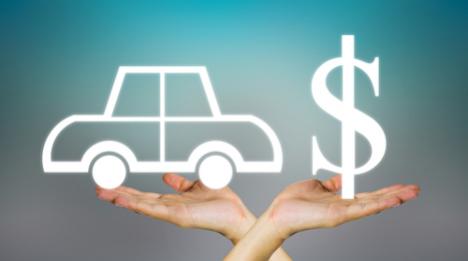Pressure building on ‘fair gap’ between new & used retail prices

Photo from Shutterstock.com
There remains a “fair gap” and “a good amount of play between” the typical retail price between a new vehicle and a used or even a certified pre-owned model.
However, Kelley Blue Book senior analyst Alec Gutierrez is seeing trends that are putting pressure on his current assertions.
Gutierrez mentioned during a call with the media earlier this week that the average incentive figure is above $3,500 per unit. ALG pinpointed incentive spending at $3,511 percent unit in March, climbing by $415 from a year earlier.
So the difference between similar models that are new versus nearly-new, CPO or whatever moniker a dealership salesperson might use is “tightening every day with incentives and dealer discounts,” Gutierrez said.
“I would expect to this trend continue,” he continued. “Used cars are going to come back in greater and greater volumes. Manufacturers are going to have to decide if they’re going to keep using incentives on the new-car side to maintain some form of competitiveness.
“Certainly if interest rates rise, that will shake things up even further,” Gutierrez went on to say.
And speaking of those interest rates, Edmunds mentioned that its analysis showed the average APR on installment contracts for new-vehicle deliveries in March reached 5.02 percent — the highest reading in seven years. This figure is up from 4.87 percent in February and 4.80 percent in March of 2016.
Edmunds executive director of industry analysis Jessica Caldwell pointed out the last time interest rates for new-model sales crossed the 5-percent mark was in February 2010.
“With high incentives, record inventories and interest rates at the highest we've seen in seven years, we're seeing a lot of signs right now that the tide is turning for the auto industry,” Caldwell said. “The training wheels that were put in place during the recession are coming off, and the industry is now being challenged to see if it can find the right balance on its own.
“While we’re not facing uncharted territory from a historical perspective, it will be interesting to see how the busy spring selling season unfolds as we navigate toward a more a normal pattern,” she added in analysis delivered to Auto Remarketing.
And, of course, the more levers automakers pull to keep new vehicles from piling up in inventory more than they already are, the more the potential impact on the used-vehicle market. The American International Automobile Dealers Association reported that average length of time a new model sat on a dealer’s lot hit 70 days in March — the longest stretch of time since July 2009.
“The industry’s performance in March suggests that sales may be plateauing,” AIADA president Cody Lusk said in a news release. “Now is the time for dealers to tighten their operations.”
ALG chief economist Oliver Strauss added in another news release, “Hefty incentives have negative impacts to resale values, and that can be even more potent in combination with a heavier mix of leasing being used across both the mainstream and luxury segments.”
During the media conference call, Autotrader senior analyst Michelle Krebs alluded to the segment of the retail equation likely to be most benefitting from the jostling between the new- and used-vehicle arenas — potential buyers.
“That adds another layer of complexity. Do you buy the new car or the nearly new car? There’s incentives being offered on some of the certified pre-owned vehicles. It’s going to take some really close shopping to get the best deal, and there are great deals and improving deals out there,” Krebs said.

 View The Latest Edition
View The Latest Edition

